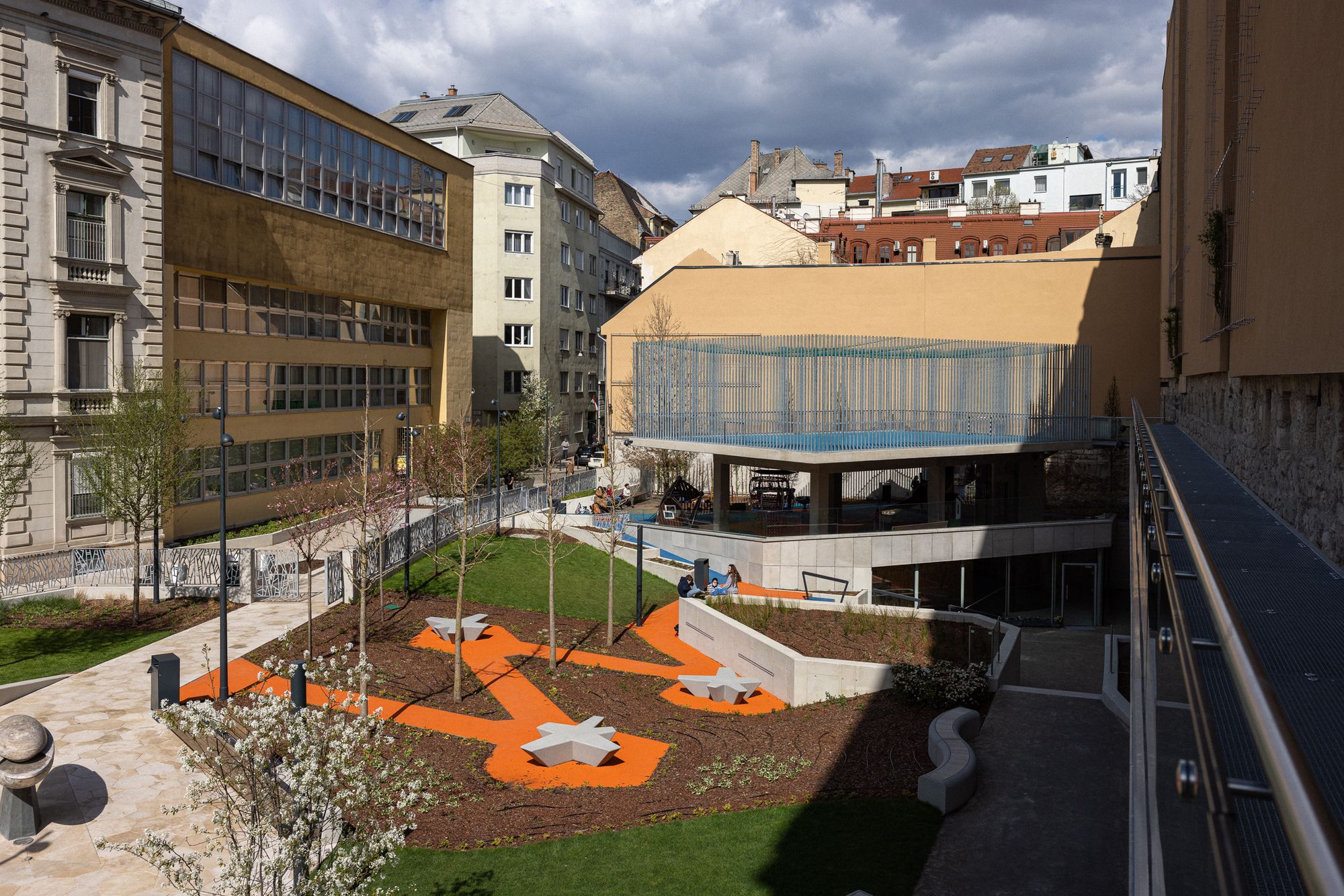When designing a public space, it is important that the outcome is not only a representative place, where we can rest while taking in the environment around us, but also that it activates and engages the citizens. The new Bástya Park in downtown Budapest certainly has some spectacular features, with the longest section of the 15th-century city wall revealing itself, as well as a floating sports field and a lookout point that overlooks the Cave Church on Gellért Hill. In addition to all these factors, climate-friendly and innovative solutions are given top priority. We spoke to Bálint Koszorú, the Project’s Lead Designer and Managing Director of Város-Teampannon.
It’s not the first time for Város-Teampannon to participate in public space developments in the city center. They were, for example, involved in the design of the new main street of Budapest, one of the first and most significant urban planning interventions to calm traffic in the heart of the city. “In this work, we removed the underpass at Ferenciek Square, thereby displacing the M5 and M1-M7 motorways through traffic out of the city center. At the time, the plan caused quite a stir, with many people criticizing it, but time has proven this intervention right,” said Bálint. The company’s other large-scale downtown projects include the renewals of the Március 15 Square, the Vörösmarty Square, the Podmaniczky Frigyes Square and the ongoing revitalization of the Arany János Street. For the latter, a new alley of nearly 100 trees, planted using a so-called Stockholm system, will make the city center more liveable for pedestrians.
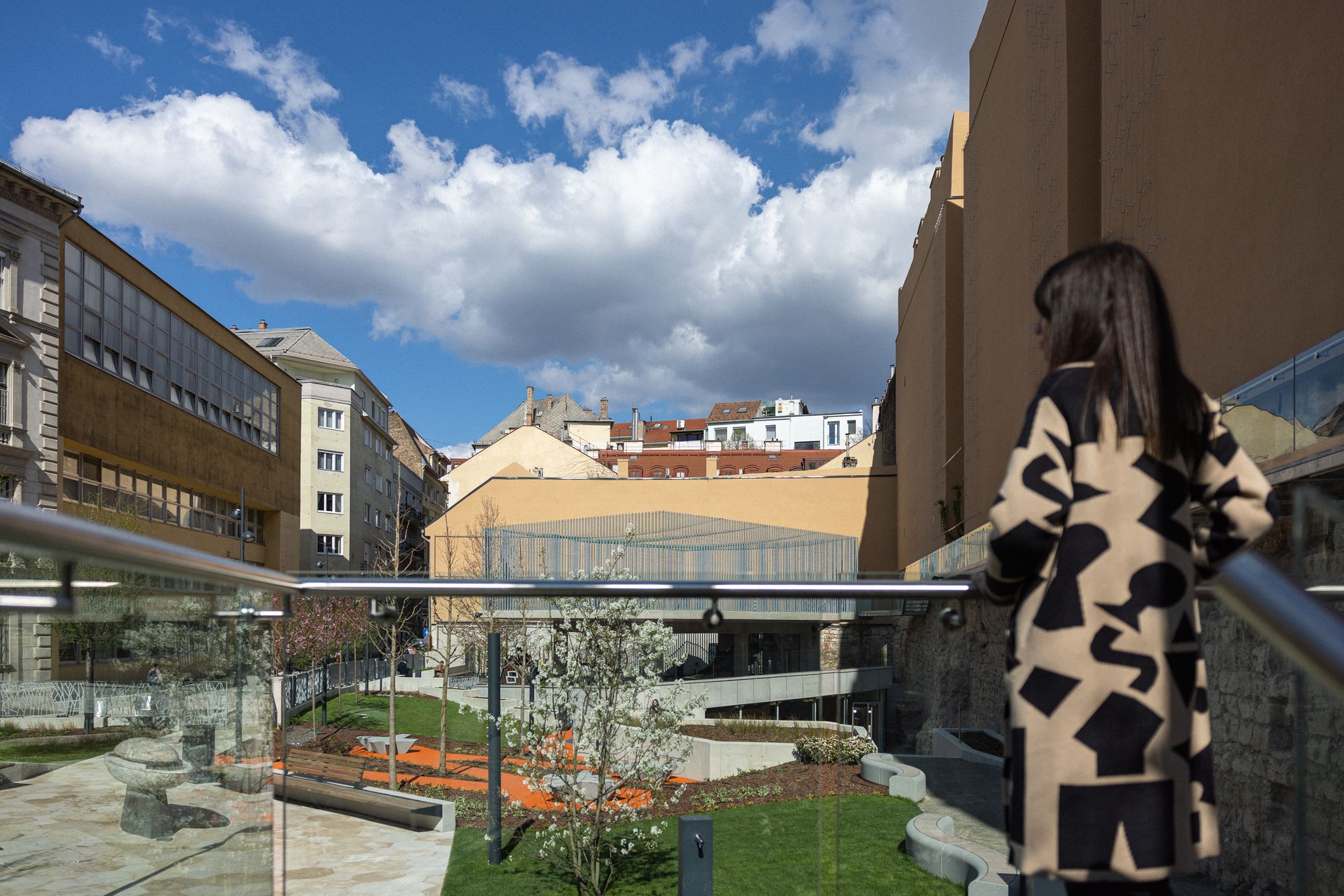
The development of the Bástya Park has many surprises in store, whether it is the innovative solutions used, the approach that guides the concept, or even the location. It is also important to bear in mind that the inner city of Budapest is an area with a severe lack of green space and that in the South Downtown, where Bástya Park is located, this takes an even more extreme form. But the park, which was opened in March— and the bordering and likewise renovated Veres Pálné Street and Bástya Street—is not only interesting because it adds 846 square meters of new green space to the built-up, dense urban fabric.
Past and present come together
Situated at the intersection of Veres Pálné Street and Bástya Street, the new Bástya Park is already unique in its location. The park’s spirit lies in the presence of the historic city wall, which cannot be seen anywhere else in Budapest in such length and size. The approximately 8.5 meters high, 2 meters thick, contiguous former city wall of Pest—built during the reign of King Matthias—opens up to visitors over a length of almost 50 meters. As Bálint pointed out, “from an urban development and heritage conservation perspective, designing the park was a super interesting and complex task, full of challenges.”

The historic restoration of the city walls was an essential part of the design: the firewalls of the neighboring buildings were insulated and a structure was added to help plants climb up. On the city wall, you can walk along a modern-looking Chemin de ronde (a protected walkway running along with the crown of defensive walls), presumably at its original height. “During the planning phase, we collaborated with the Budapest History Museum. The research material revealed that there was, although not along the entire length, but in sections, a defensive walkway running along the city wall. We concluded that restoring it could be a spectacular element of the park. As there is no precise information on the original technical design and use of materials, we applied modern materials, galvanized steel and glass, which clearly shows that this is not the old but a new addition: in spite of material choice, the past is evoked in function,” said Bálint.
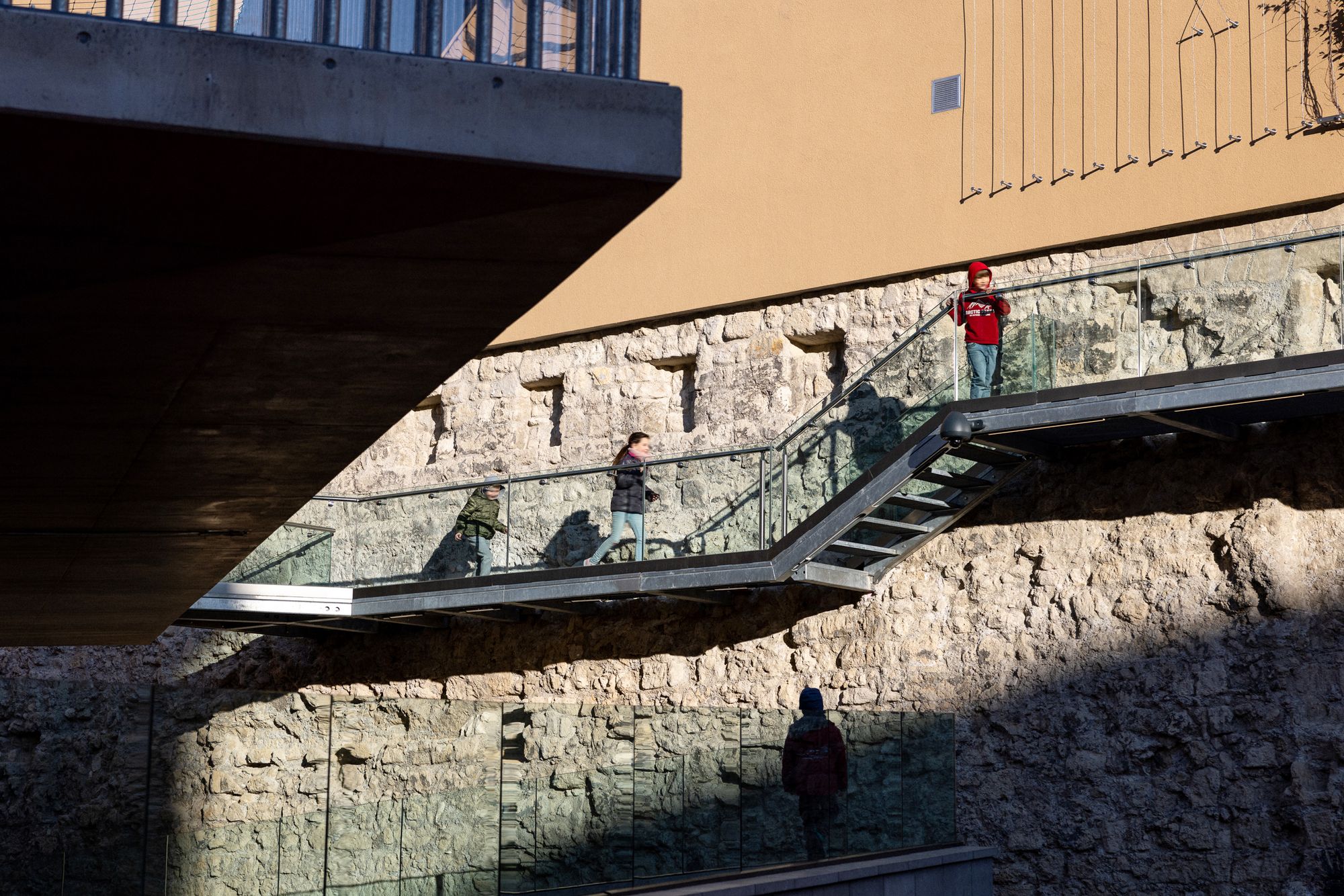
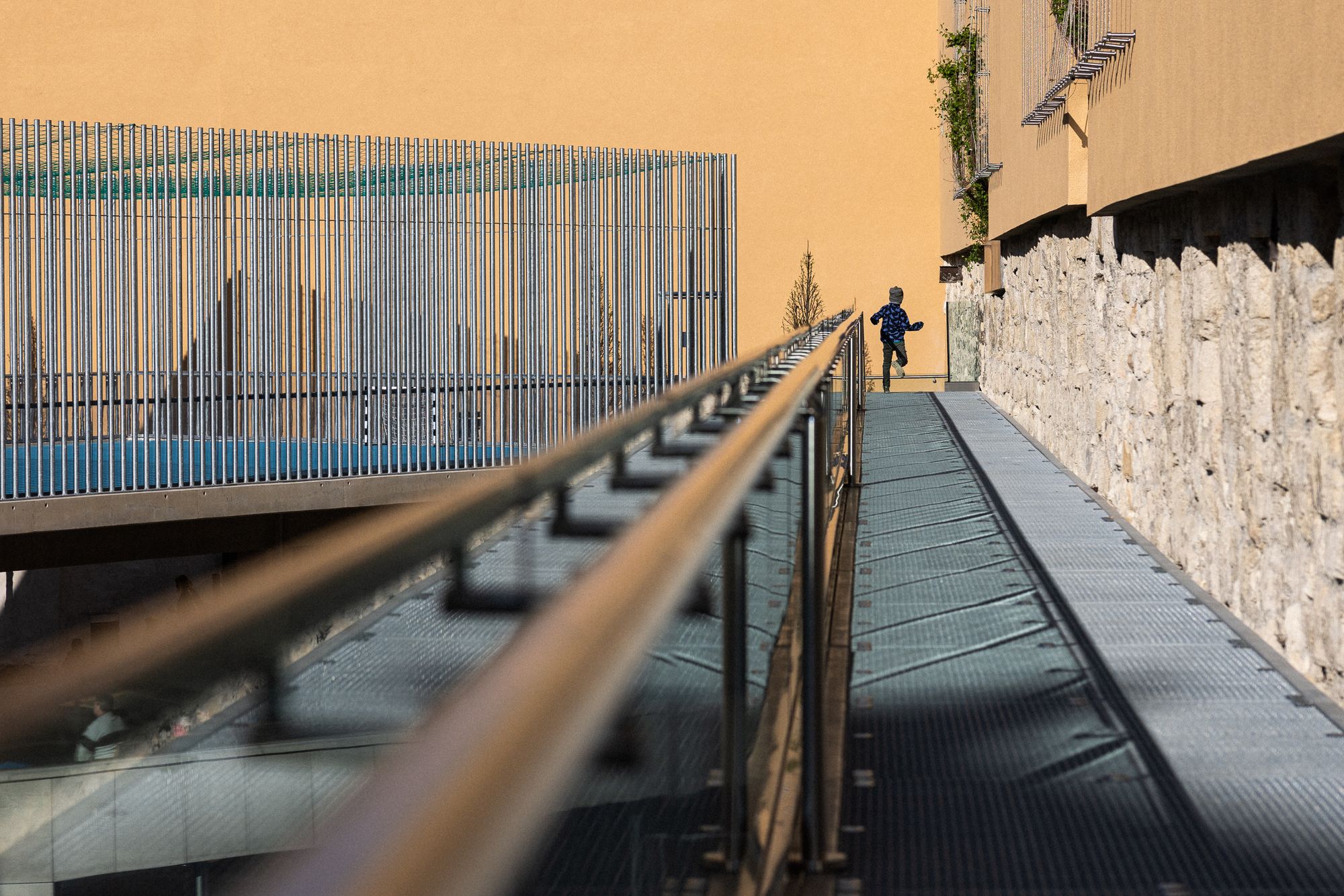
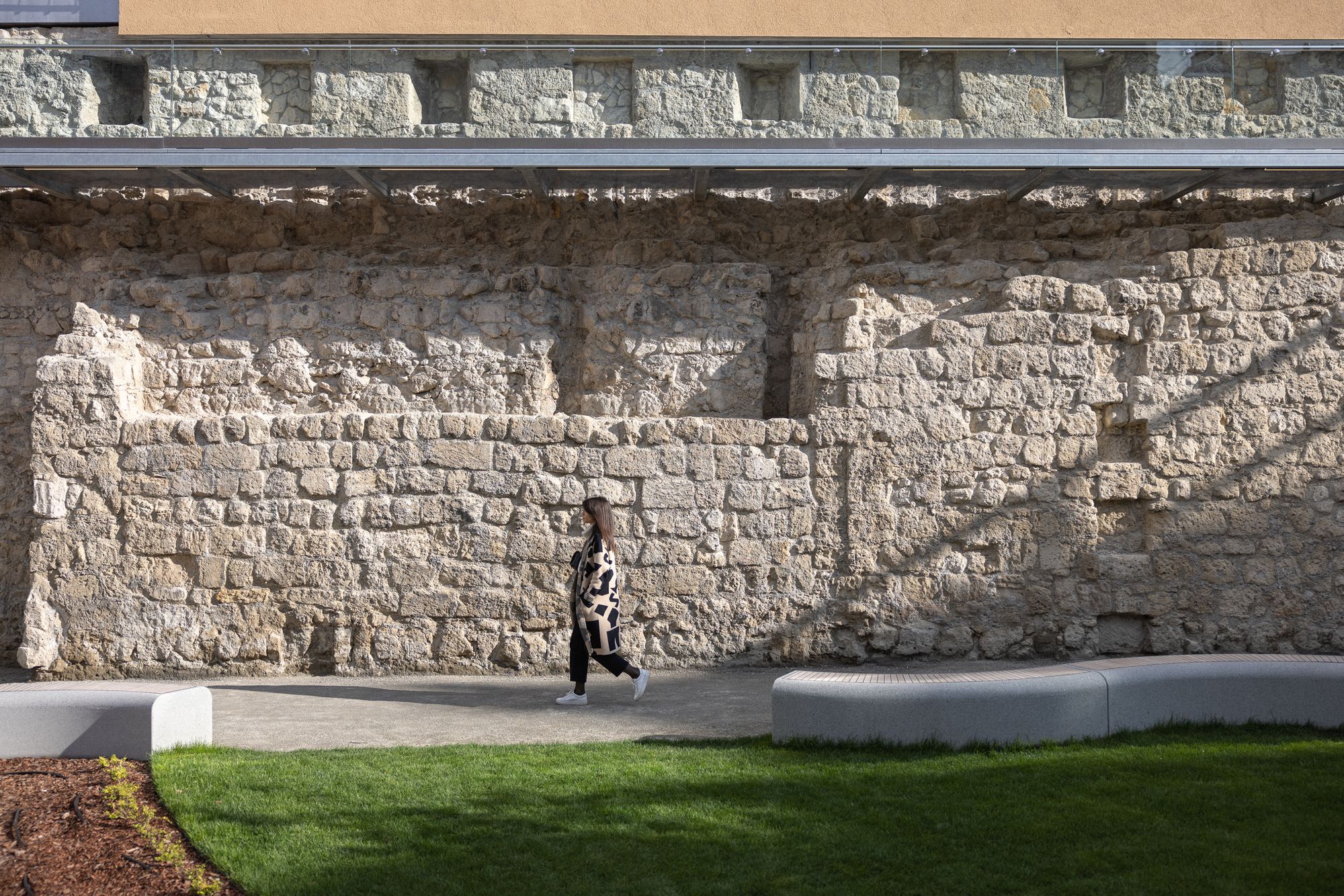
At the foot of the city wall, under the protected walkway, a pedestrian walkway has also been created. Its special feature is that, from here, at the lowest point in the park, you can see almost the entire height of the city wall and the former street level appears as well. A lookout point, covered also with plants, completes the city wall, from which you can see the Rock Chapel on Gellért Hill. “In fact, we can look at this feature as a bastion-like structure of the city wall,” added Bálint.
“Playful space”—many functions packed into a small footprint
As we arrive at the park, besides the fully revealed town wall, other details soon catch our eyes, such as the contrasting colors, the serpentine-like walkway, or one of the main features of the park, the multi-level and floating structure. This kind of play with space is no coincidence, since, as Bálint pointed out, the idea behind the design was based on the “playful space” motto.
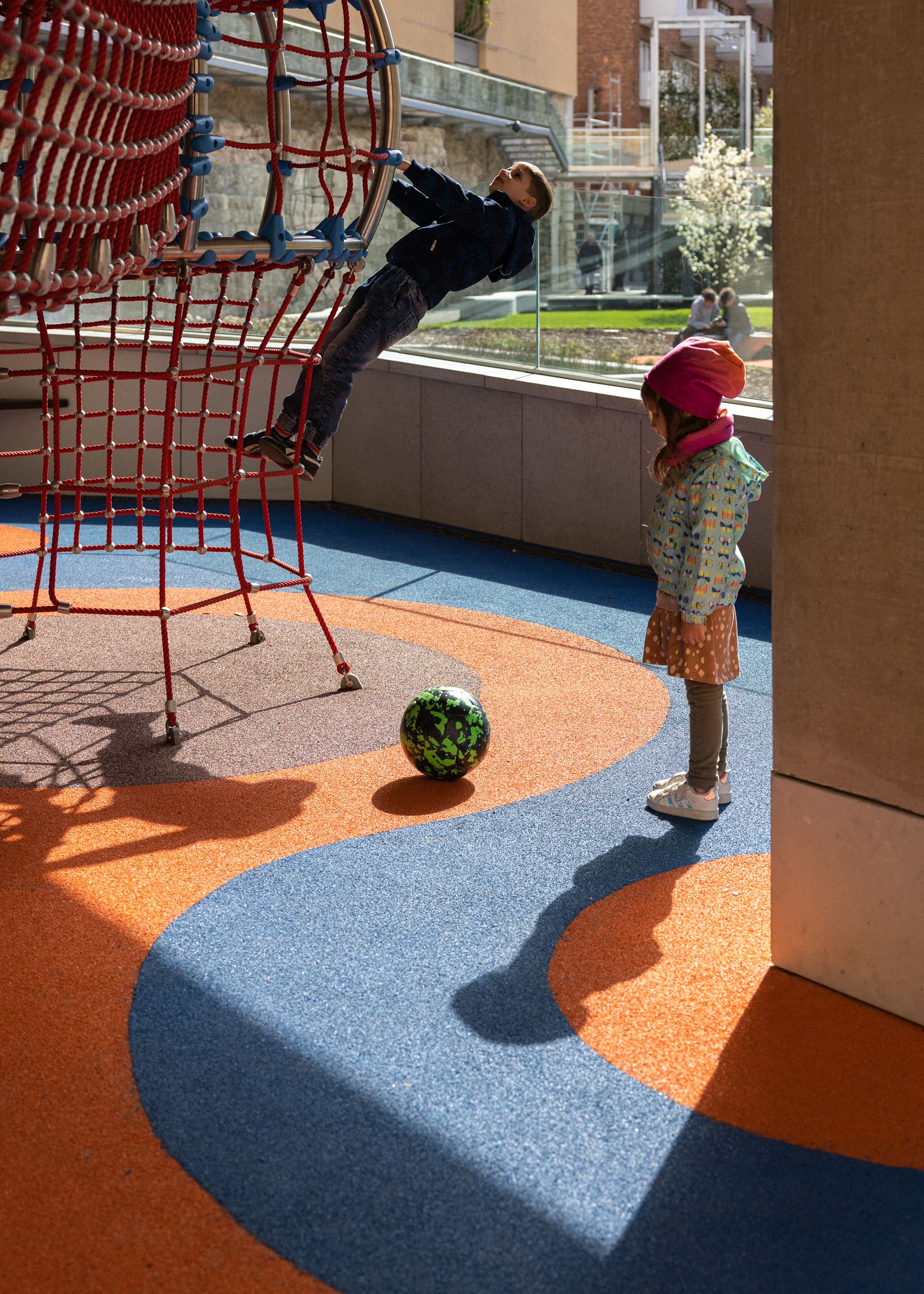
The multi-level use of space is already apparent in the design of the city wall, but it becomes even more spectacular in the building complex, which includes a sports field, a playground and a semi-subterranean exhibition space, all arranged underneath each other. “We were approached by the local municipality to design a public park with specific features such as the renewal of the city wall, an associated promenade, a small exhibition space, public toilets and a playground. Another important aspect was to integrate these functions in such a way that it would also provide as much green space as possible: this was in fact our starting point as designers. We gathered all these functions, then we checked how much space we had available and we began to plan and calculate how to fit them all into such a small footprint. We made several versions in an internal company tender, which led us to the conclusion that all these functions could only be realized with a multi-story space,” explained Bálint.
Playfulness was an important factor in the design, both in terms of space structure and functionality. “From the very beginning, our aim was to design the park in such a way that every element of it would be playful for children or visitors to use, and that different age groups would find different functions in each element,” Bálint highlighted. One such example is the area with the French steps next to the playground, which can be used occasionally for educational purposes or as a venue for small performances or concerts. “It is also a good starting point for visitors and tourists who want to explore the city wall or the city center. The French steps and the rubber-coated serpentine in the park can also be used as a safe play area for children,” he added.

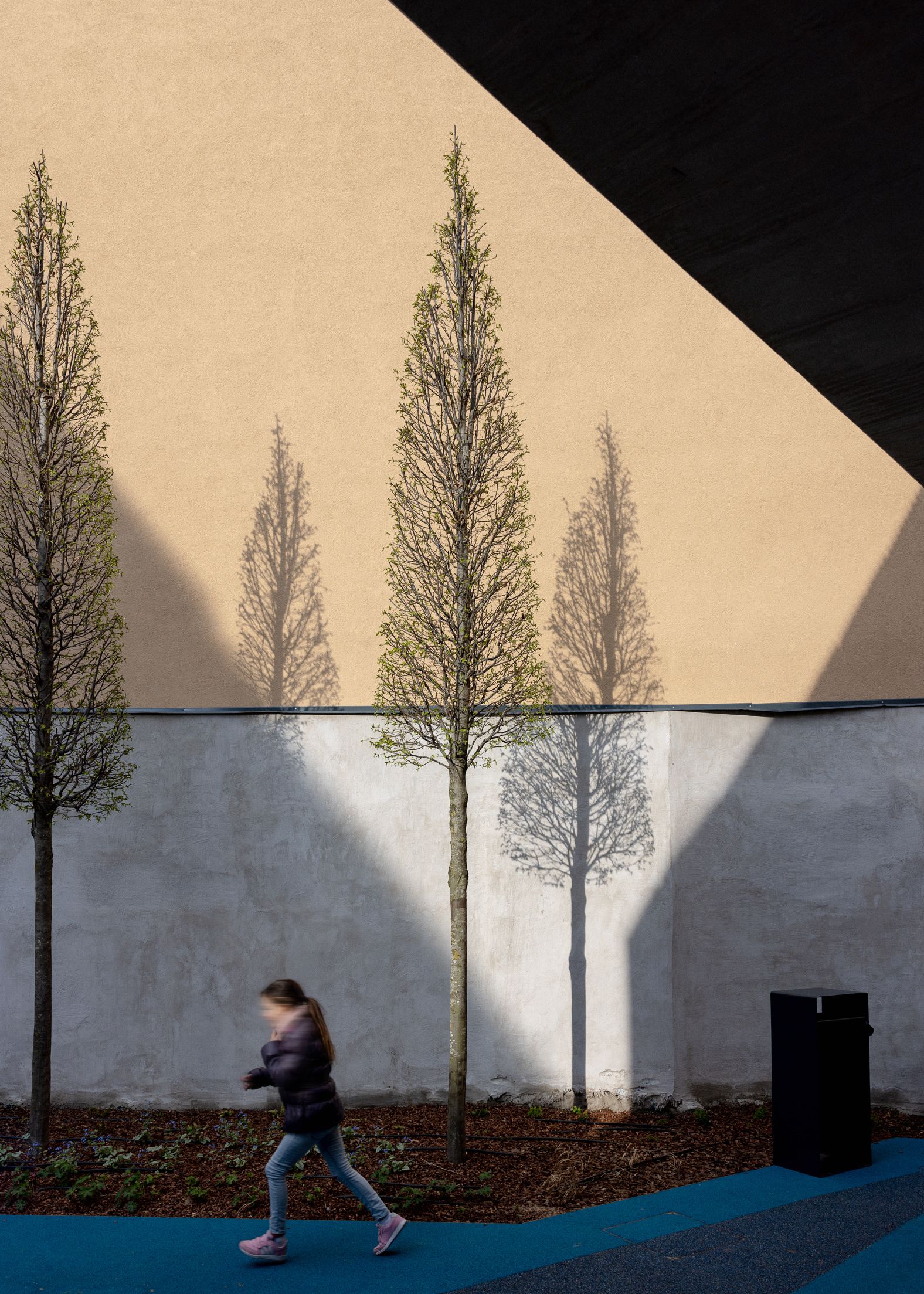
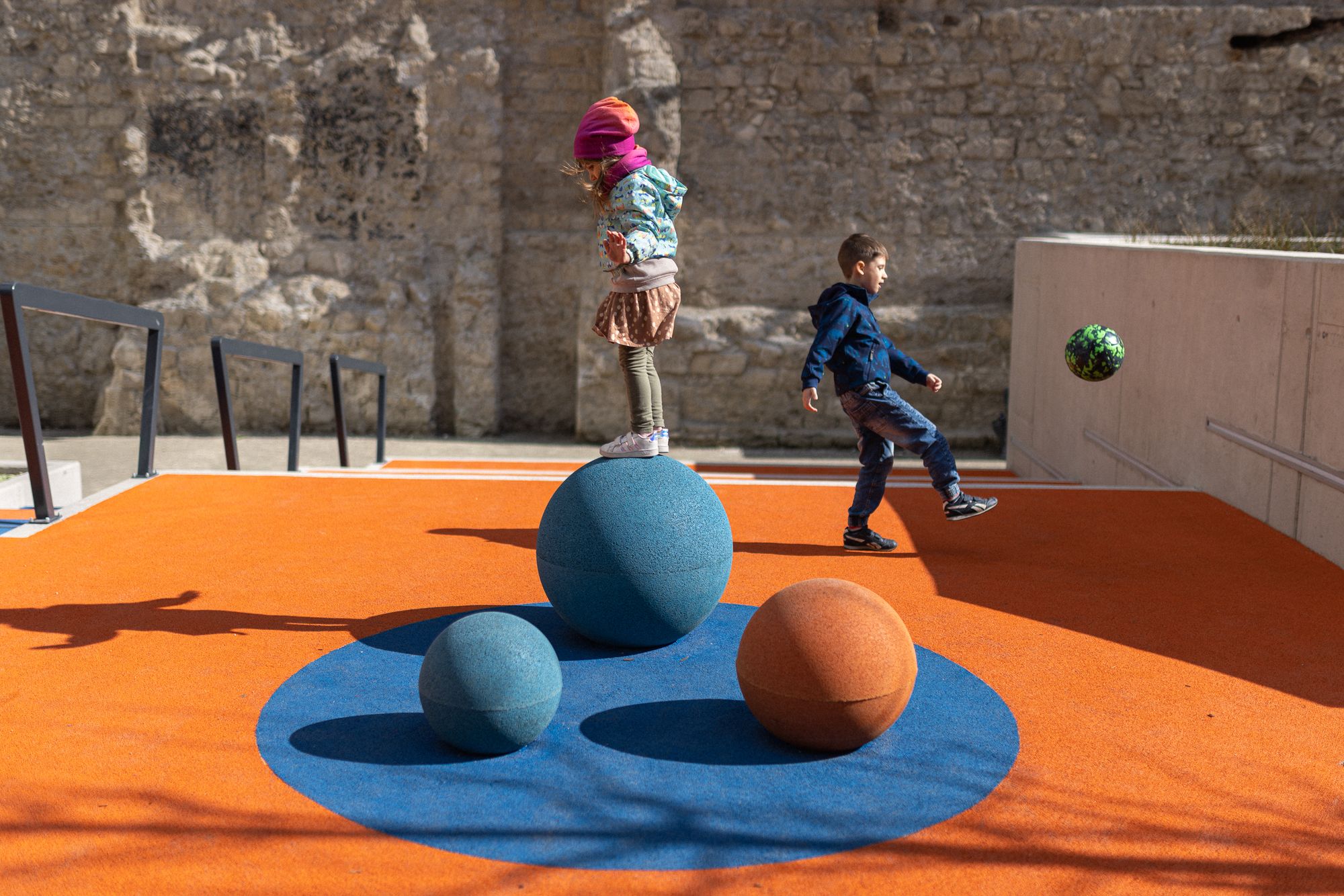
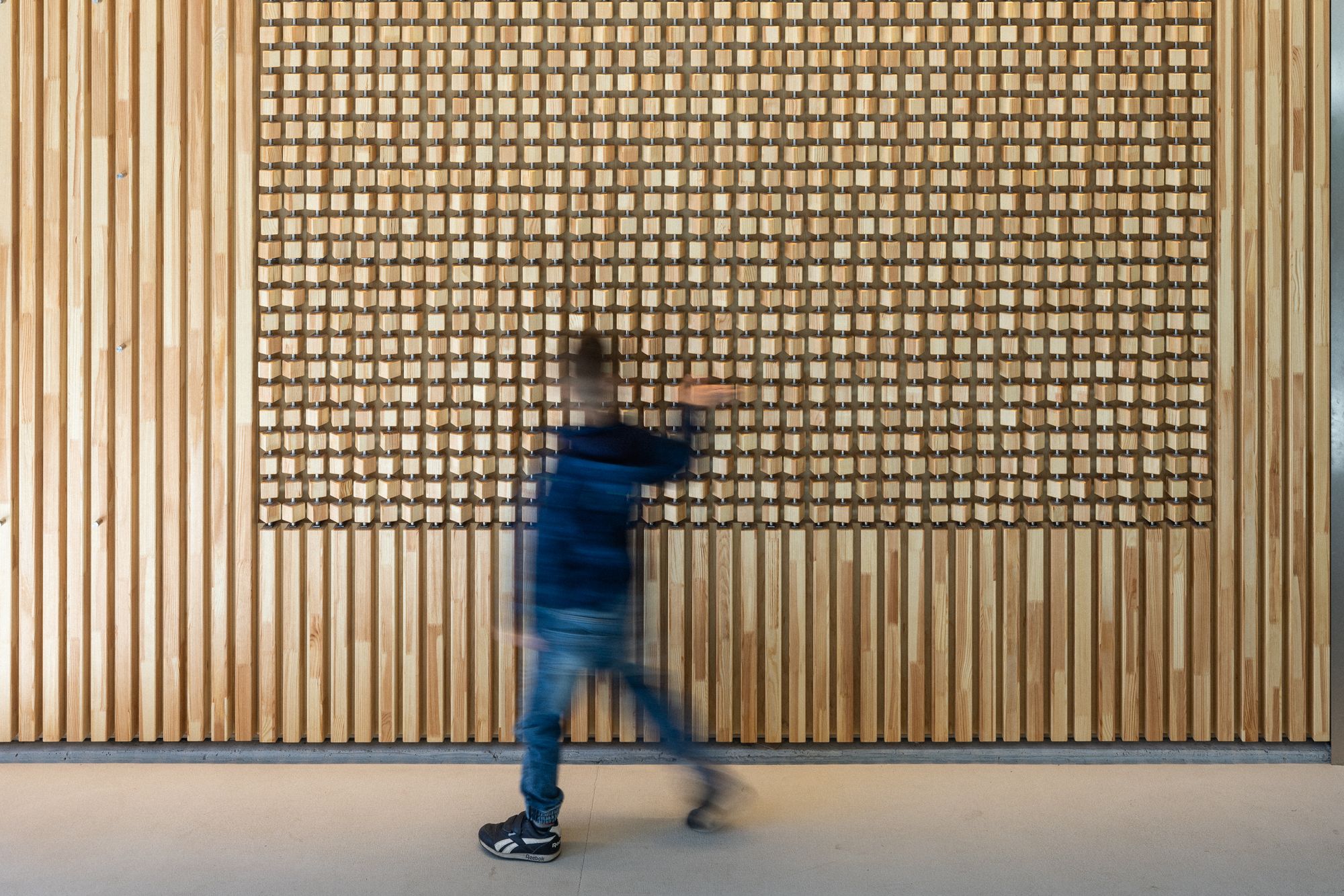
Going green: climate-friendly innovations
In addition to active recreation, improving the microclimate was also a primary objective of the multifunctional park development. They paid attention to ensuring that the design is guided by a green approach. As Bálint Koszorú explained, climate-friendly solutions have several important components, such as the proportion of green areas, and the type and quality of paving, but we can mention rainwater management, evaporation, shading and the use of renewable energy as well. “We’ve applied ecological practices throughout the design of Bástya Park. On one hand, we keep rainwater in place throughout the park: we’ve created a rain garden to which we channel excess rainwater. Here we’ve designed plants that need more water. The city wall passage got a stabilized sprayed pavement that is mixed with vegetable oil: this coating transfers the water and again, keeps the rainwater in place. Another important thing is that the irrigation is done from a drilled well, so we don’t use chemicalized tap water,” Bálint explained.
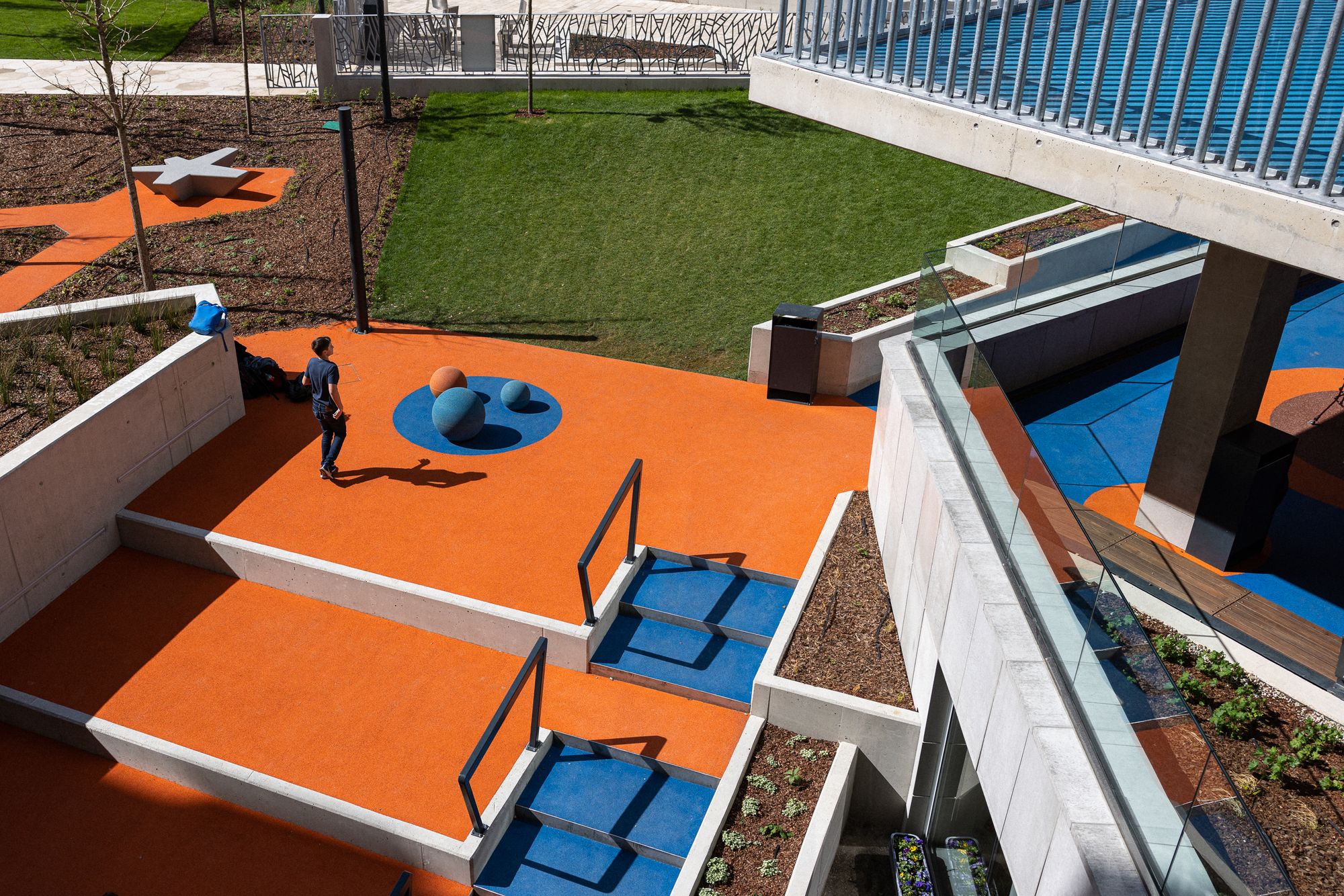

In the spirit of the green approach, the former limestone pavement of Bástya Street was recycled, and, after careful demolition and cleaning, reinstalled, and replaced with new stones only when it was absolutely necessary. Some of the rubber paving on the serpentine and the playground area is also made of recycled rubber. To improve the microclimate, Város-Teampannon installed a mist curtain, but the green walls mentioned above also serve the same purpose. In addition, outside the park, at the end of the square nearest to Veres Pálné Street, a few square meters of “chill zone” has been created: a special feature of this area is the pergolas above the seating areas, which will create a shady arbor with the vegetation that will quickly grow on them, thus also playing a significant role in improving the microclimate.

Another innovation of the development is the replanting of 20-30-year-old trees with crown diameters of up to 5-6 meters. “To my knowledge, this was the first time in Hungary that trees of this size were planted, so it was a novel solution. This also meant that we didn’t have to design a separate shading structure for the sandpit, because the 30-year-old tree gives shade for the sandpit, so the children can use it safely. In a dense inner-city area that lacks trees, this is a good solution, as it produces an enjoyable result very quickly and in a spectacular way. If we planted young trees, we would only get the same result in 20-25 years,” says Bálint.
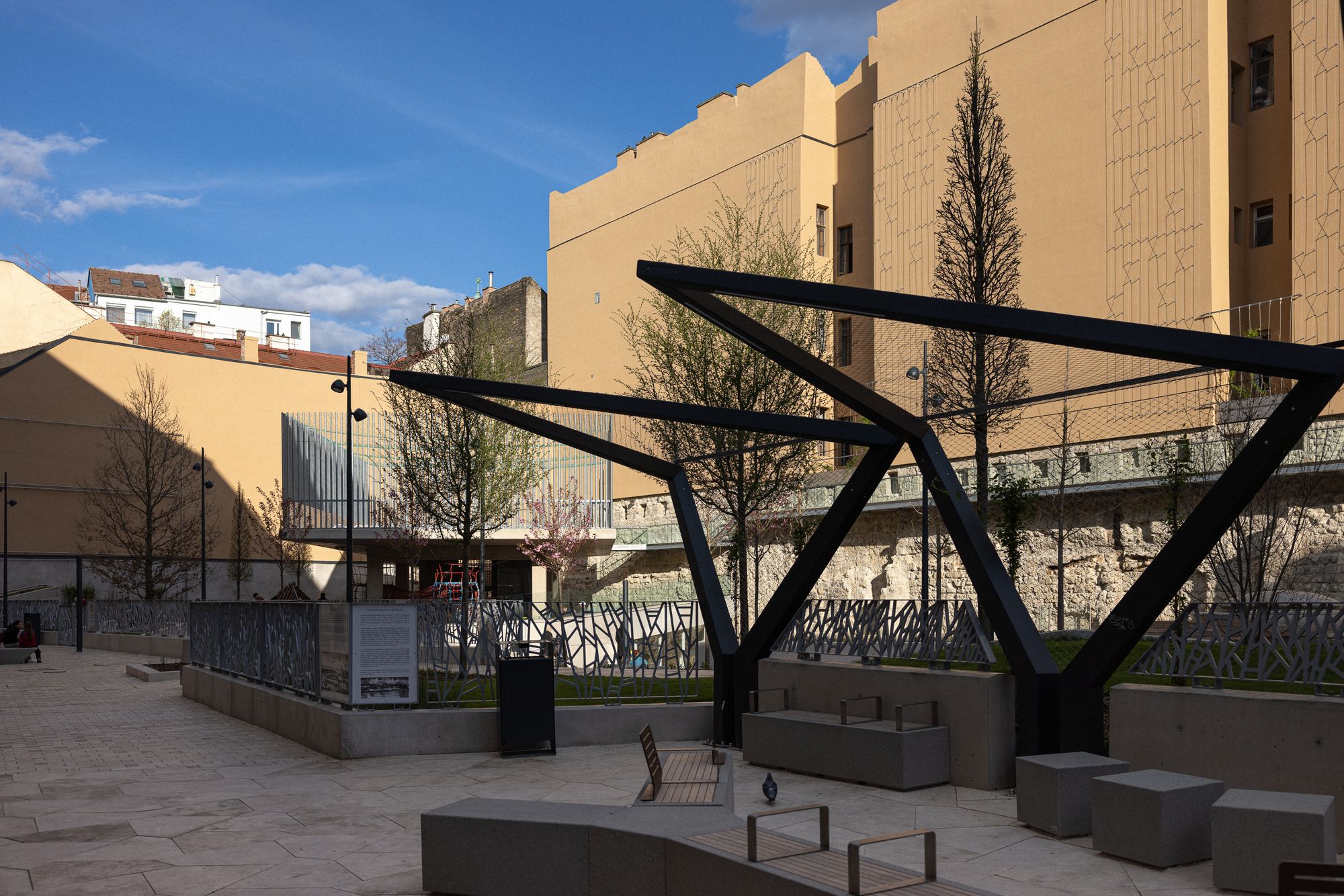
Beyond the innovative and unique solutions, Bástya Park also features numerous street furniture developed by Város-Teampannon, such as the stainless steel rotating chair, familiar from the Március 15 Square, or the screw-shaped bike racks that pop up all over downtown Budapest. But we can also include the aforementioned mist gate and the pergolas that shade the hangout spot and also act as street lighting. And much to the delight of visitors, the entire park is covered in stabilized grass, making it a pleasant place to walk or just chill on the grass.
Photos: Balázs Mohai
Város-Teampannon | Facebook
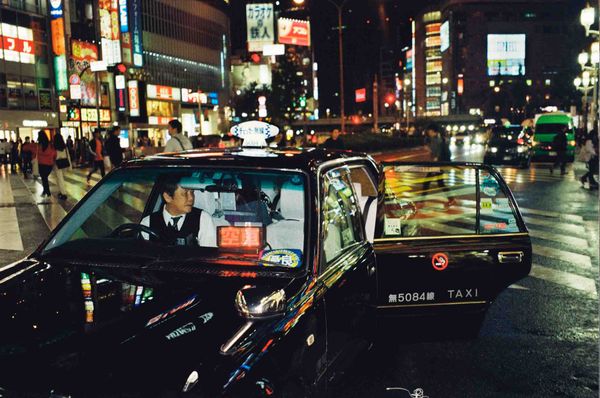
New York DJ legend, Bill Patrick’s first photo exhibition debuts at EASY Art Space
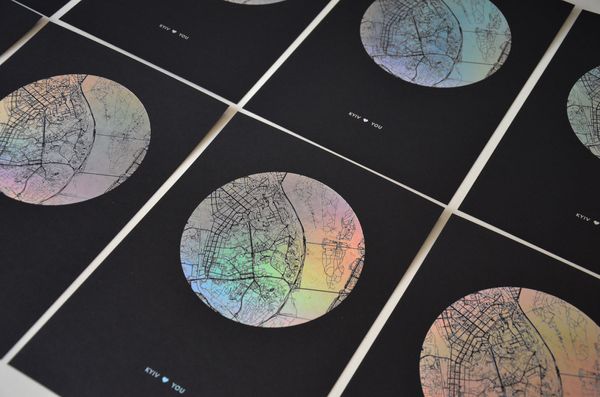
Support refugees fleeing the war in Ukraine with a DOT for You poster!










